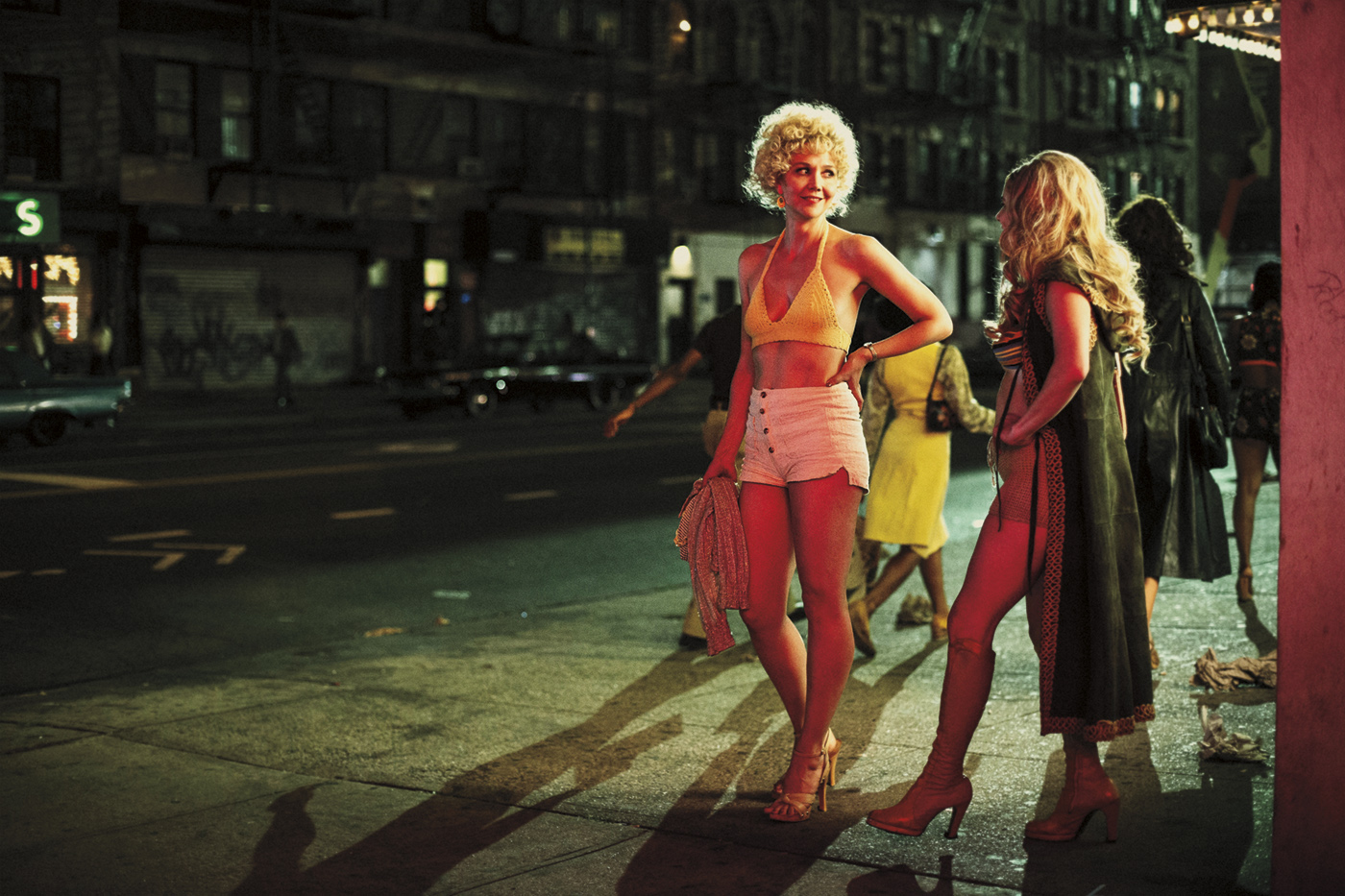The creators of The Wire and Treme return to television for this gritty look at the origins of the porn industry – and a long-vanished world on New York City’s 42nd St.
Standing in Times Square in 2017, watching moms and dads with strollers and international tourists cue up for the latest Disney musical, it’s hard to imagine the beating heart of America’s most visited city was once a gritty paradise of drug dealers, peep shows, porn films and SRO’s catering to the many sex workers whose “office” was New York’s fabled 42nd St. But to hear George Pelecanos, executive producer and co-creator of the new HBO series The Deuce tell it, the stories shared by one lone survivor were just too compelling not to become must-see television.
“The Deuce is right in our wheelhouse,” Pelecanos explains, meaning it is a layered, multi-character look at an urban American city, as in The Wire and Treme. “But it came about by chance. David [Co-Creator David Simon] and I met a guy who had a bar that was mobbed up back in the day – the 70’s and 80’s, on 42nd Street. He was the last man standing from that world and wanted to talk.”
Pelecanos recounts how that simple two-hour meeting made it clear to him and Simon that the former bar owner’s stories were perfect for long-form television. “So David and I went back and spent a whole week with him, this time with [Co-Executive Producer/Writer] Richard Price,” Pelecanos continues, “and those conversations provided the basis for the entire series. Not long after we met, [the bar owner] passed away.”
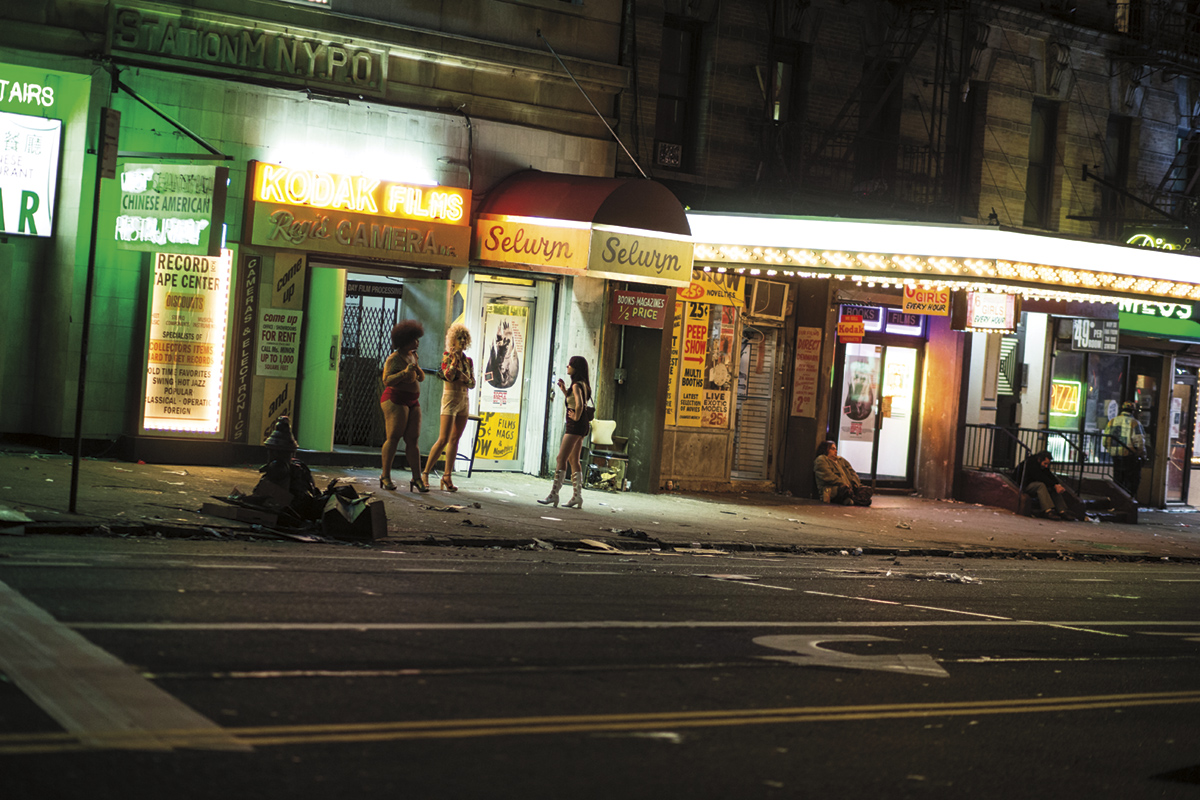
Recreating a lost world of pimps, prostitutes, vice cops, mobsters, and sex shop proprietors who populated 42nd St., circa 1971, started with a few core visual collaborators: Director/Executive Producer Michelle MacLaren [ICG Magazine, Breaking Bad, 2013], Production Designer Beth Mickle and Pilot DP Pepe Avila del Pino, whose work from the HBO/Cinemax series Quarry MacLaren had seen in rough-cut form (provided by Quarry director Greg Yaitanes).
“When I came on, David and George had two scripts written, and they had James Franco [who plays real-life twin brothers from Brooklyn in the show],” MacLaren remembers. “I put together a visual presentation for David and George that included period photos of pimps and prostitutes on the street – just real people living their lives. That reference material, with additional contributions from Beth, Pepe, and our costume designer, Anna Terrazas, inspired the look of the show.”
MacLaren also watched a lot of classic 1970’s films – Mean Streets, Taxi Driver, Panic in Needle Park, The French Connection, and Shaft among them. She says herself, Mickle and Avila del Pino spent time “walking the streets of New York City to wrap our heads around how this could be done,” given how much new greenery had come in when Bloomberg was mayor. “Eventually we decided to use three blocks way up in Washington Heights, where, from a certain height down, Beth and her amazing art department could dress it perfectly for 1971, and anything above that would be CG.”
Mickle elaborates on the extensive location search: “We discussed building our 42nd Street stretch as a backlot, but we would have lost the movement and the textures in the distance. Our pilot location manager, Pat Sones, and I scouted over 30 exterior street locations throughout every borough of New York City, and eventually a stretch on Amsterdam Avenue became the best base for our Times Square world.”
In fact, just a few blocks had to account for four locations – 42nd Street, Seventh and Eighth Avenues, and Times Square. Period cars and traffic had to be altered to replicate one- or two-way streets. “Every location on the pilot was practical except for one hotel room, and that presented many challenges, space-wise,” MacLaren adds.
“The scene where Darlene [Dominique Fishback] is attacked by a john in the hallway and forced inside her room is a good example, because that room was so small we could barely get in a camera,” she continues. “Pepe was a great choice, because I needed a cinematographer who was bold enough to light with a single light bulb. I told him that metaphorically, of course, but in some scenes, he really did!”
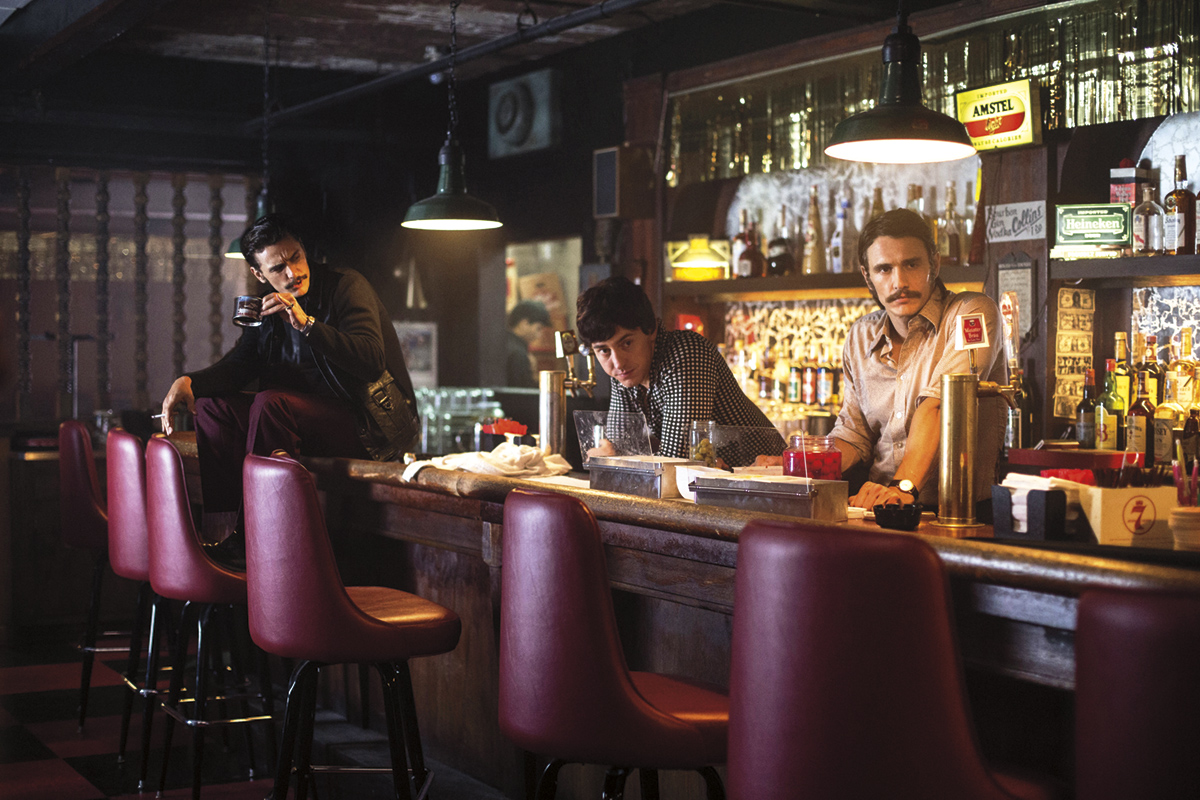
Avila del Pino, who shot on ARRI ALEXA in HD resolution, using older Panavision Primo and PVintage prime lenses, says he used a combination approach to achieve a look that appears remarkably close to 1970’s film stocks.
“Rodrigo Prieto had recommended a software called Light Grain, which was new at the time we shot the pilot [in 2015],” he explains. “Coupled with Beth’s production design, which was fearless in approximating period looks, and a lot of practical lighting – aided by my gaffer, Steve Ramsey – we were able to get those crushed blacks and textures that were not exactly like a 1970’s movie, but close.”
Using long lenses also helped. “It’s something I noticed they did a lot in Midnight Cowboy,” Avila del Pino adds. “A long lens collapses the avenues and streets and brings the whole city into your characters without making a postcard behind them. On a more practical level, recreating 1971 New York City is almost impossible given there’s a Starbucks on every corner, and long lenses, especially at night, helped. We’d put neon lights down frame and out of focus, and that would create this feeling you’re in the middle of 42nd Street in that time.”
Another challenge was how best to replicate light spill from the large bright theater marquees (advertising cheaply produced sex films) under which the prostitutes and their pimps walked each night. “We rigged LiteMats on the fire escapes all over the street to simulate the marquee light,” Avila del Pino recounts. MacLaren notes, “We couldn’t afford to build marquees, nor could the buildings hold the weight. So, Pepe built the underneath of one practical marquee, and then everything above that is CG. He used light boxes where the other marquees would be comped in by VFX so we would have interactive light on the actors. I was really happy with the results.”
Making bold choices, as MacLaren describes about Avila del Pino, and later with series DP (episodes 2-8) Vanja Černjul, ASC, HFS, is exemplified in a funny and tender scene between Maggie Gyllenhaal’s character, Eileen “Candy” Merrell, and a teenager on his birthday. Avila del Pino says his approach to lighting the pilot was “everything would appear to be coming from a single practical source – an overhead fluorescent or a light by the bed,” as in the scene with Maggie and the teen in the SRO.
“The clashing color temperatures – cool green/cyan fluorescent over the sink where Maggie does her lipstick, and the warm tungsten practical where the kid sits on the bed – is a little unsettling,” he continues. “But it speaks to the split dynamic going on with the characters [where Candy ultimately agrees to take a personal check from the boy so he can extend his first-ever sexual encounter].”
The “fearlessness” that Avila del Pino attributes to production designer Mickle is on display in the scene as well. “Beth was unafraid to leave a big, single-color wall behind a character because that’s how movies of that time [in urban New York City] looked. I think another production designer might have been tempted to over-paint, or over-dress those locations, but Beth, Michelle and I were totally in sync.”
For her part, Mickle took color and lighting inspiration from street photography of the late 1960’s and early 1970’s, as well as Martin Scorsese’s early films. “We worked with an array of colored lighting for the street scenes,” she recalls. “The golden glow of the marquee bulbs, hits of red and blue neon signage, and pops of vivid yellow in backlit signage, which created a rich backdrop for our night scenes.”
Achieving visuals with “a rich and almost documentary quality,” as Mickle describes, was key to the show’s look. The designer says that using as many practical locations as possible provided a textured, worn-in patina to every backdrop. “Authenticity was everything,” she states.
Pelecanos concurs, noting that because Simon was a journalist, “and my novels are all urban reportage,” they “lived in fear” of getting even the tiniest of period details wrong. “We had consultants for each aspect of the show,” he adds. “Former porn actors, police, feminists, et cetera, to keep us honest. And, of course, that [approach to period details] extended to the visual aspects of the series. We told [the DP’s] that we wanted this series to look like a film shot in the 1970’s that someone just pulled out of a vault.”
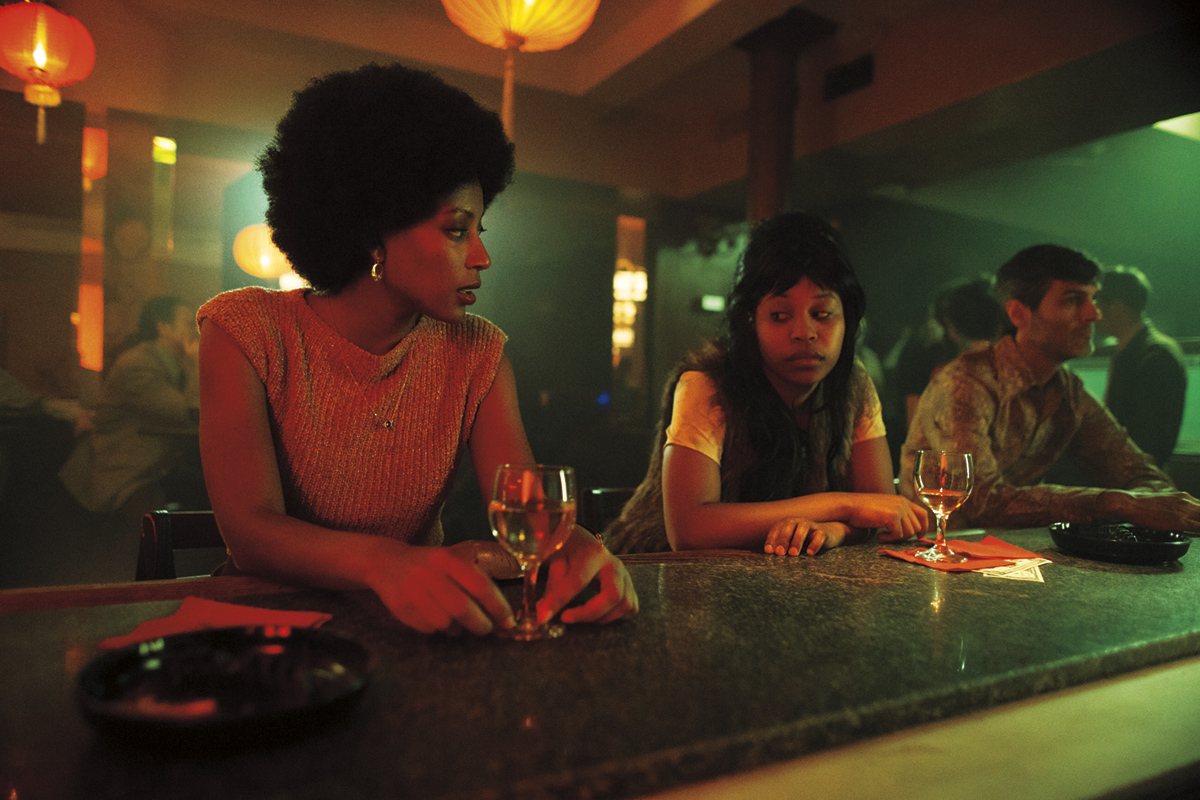
While Avila del Pino’s pilot made extensive use of Light Grain, and a 1970’s Fuji film LUT – created by pilot/series DI colorist Sam Daley at Technicolor – Černjul says he made adjustments about halfway through the series, “when HBO asked us to deliver in both SDR and HDR,” he recalls. “That was a bit challenging, altering look-up tables on the fly. But the key was to preserve the 1970’s look and keep the same feel in both color spaces while also trying to take advantage of the extended latitude of HDR.”
Černjul tested lenses to replace the PVintage primes, but found nothing as good to approximate the period look. He did sell the producers on moving over to Panasonic’s VariCam 35, given the larger number of street locations needed throughout the series and the desire to use as much available light as possible.
“I wanted to get as much of New York as we could for free,” Černjul laughs. “And the VariCam’s dual native ISO feature helped.” Černjul, whose credits include Marco Polo and Orange Is the New Black, says his biggest challenge was “all the neon lighting that dominated 42nd Street at that time,” and trying to preserve the highlights. “We came up with different solutions for different signs – some windows had hard gels, other times we built housings for the signs that allowed us to use hard gels. Sometimes we painted them. But overall, controlling all the neon light required a lot of preparation.”
Visual continuity in The Deuce also required a lot of planning, and that was built into the show’s superb writing; both cinematographers (guided by MacLaren) relished the chance for a visual conversation between the first and last episodes.
“The ending montage was the first thing I talked about with Michelle when prepping Episode 8,” reflects Černjul about a complicated series of moving camera shots and well planned transitions that end the season. The different looks, which define the fate of each character, close on Bernice (Andrea-Rachel Parker) in a higher-end sex parlor, an innocent now turned to prostitution. She enters a room and closes the door, leaving an empty hallway burning bright with practical lights. In the words of MacLaren, “a lot of time has passed, but nothing has really changed save for the geography.”
That gorgeous hallway shot is a bookend to the final scene of the pilot, where the loquacious and seemingly pleasant pimp, C.C. (Gary Carr) cuts one of his ladies in a stairwell in the SRO where Vince has just decamped (after leaving his wife). Vince sees the violence through a small window in the door to the stairwell and then returns to his room, hesitating before going in as C.C. walks by and nods.
“Vincent is conflicted about going to help Melissa,” MacLaren explains, “and ultimately he just goes into his room and does nothing, leaving behind an empty hallway. When I saw the script for Episode 8, I realized that George and David, in all their brilliance, had set up the [final shot of the] montage in relation to the end of the pilot.”
“That hallway was almost all lit practically,” Avila del Pino says. “It was dark, bleak and unpolished, which was important because the scene breaks with what’s come before, and we see, for the first time, the dangerous stakes of life on 42nd Street.”
Černjul notes that the hallway shot that ends the series was one of two in Episode 8 meant to visually recall the time and place where the character arc and the story began. “Just like the shot of Vincent coming back to the billiard bar to confront the man who humiliated him in the pilot, the goal [with the hallway] was to repeat the same camera work but change the atmosphere through lighting and color.”
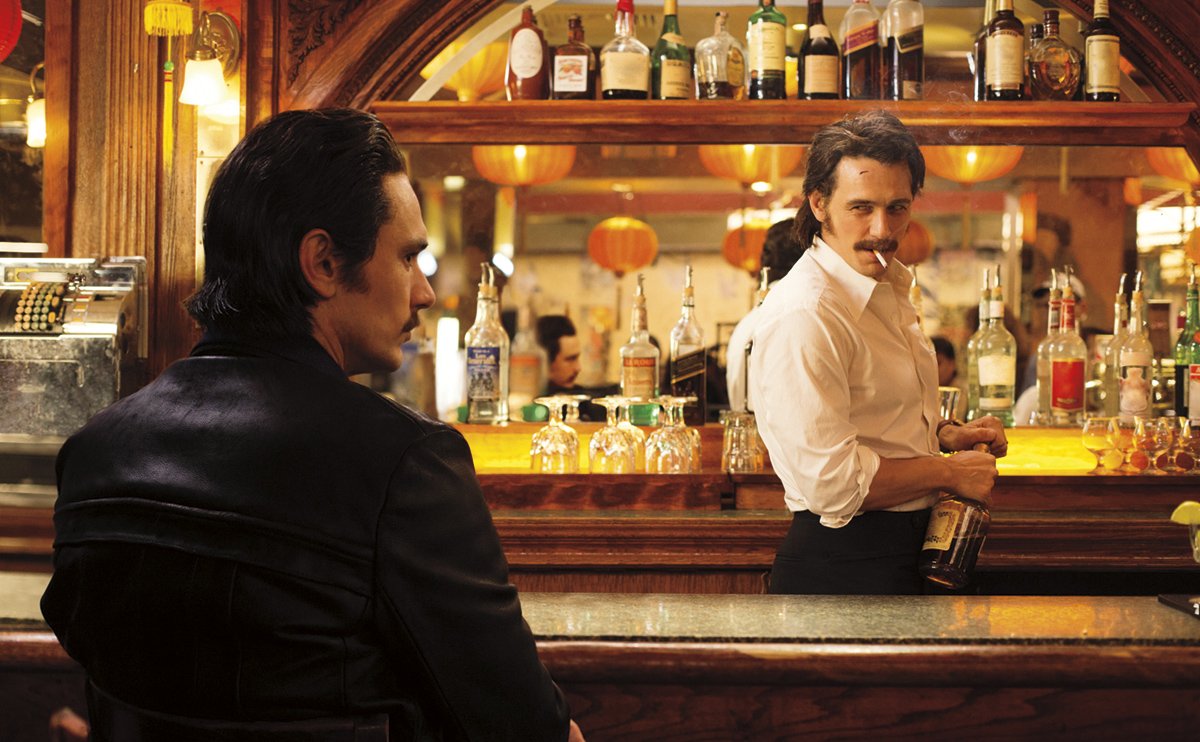
Key locations throughout the series revolve around the more anchored brother (relatively speaking), Vincent, as he turns a Korean restaurant into a hot nightspot and parlays that (with the help of a local mobster) into his own bar.
“Vincent’s bar was one of the few on stage,” Černjul recalls, “and we built it with low, hard ceilings to force us to work as if we were on location. That meant we couldn’t light from above and had to find other ways, like LED light strips strategically placed [by series gaffer John Oates] that played well with the light-sensitive VariCam.”
One of the prime evolutions in The Deuce is the arrival of the porn industry and Candy moving off the street to act in and later direct pornography. Episode 2, directed by Ernest Dickerson, ASC, shows her first acting job in a humorous and prescient scene (Candy asks questions about lighting and blocking from a guy with a handheld home movie camera). “We considered shooting Super 8, but it just wasn’t practical at that point,” Černjul notes. “But we did light the sets in frame with period sources – open photo flood lights in the case of that first film. As the series goes on, the [porn] industry becomes more sophisticated, and the lighting we see in frame reflects that.”
Super 8 was used in a later episode directed by James Franco, because as Černjul describes: “At that point in the story, we were supposed to see the actual product of the porn industry projected in theaters and booths, and using anything other than Super 8 would have felt like cheating.”
Černjul says his prime mantra was to “respect the visual logic and reality of this world” and not try to beautify the lighting. He points to a photograph he saw in the art department as inspiration. “It was a woman under a streetlight – a not-so-flattering green sodium vapor look – and in the background was bright neon. That single image helped me to understand that the goal was to enhance the natural color contrasts of the [N.Y.C.] locations, and/or work with the art department to bring it in where it didn’t exist.”
Avila del Pino says that reflections, and frames within frames, were other key motifs in the pilot. “The first time we see Vincent and Frankie together in frame [both played by Franco] is a tracking move that we shot twice, using a double as we see Frankie’s reflection in the bar mirror [in the House of Korea, which Vince manages].
“When Candy goes back to her parents’ home in the suburbs,” he adds, “we see her through the doorway, with her son, in her childhood bedroom. My reference there was In the Mood for Love. These characters are all pretending to be someone on the street, but that gets stripped away when they’re seen in intimate situations.”
MacLaren, who has two Emmys for Breaking Bad (and a résumé that includes Game of Thrones, The Walking Dead, and The X-Files) says there are few closed doors in series television anymore.
“Directors and cinematographers are given such a broad visual palette to play with,” she concludes. “Don’t get me wrong: there’s never enough time and money, in any medium we work in. But it’s a really exciting time right now, as we’re being encouraged by [showrunners], networks and studios to make television more cinematic than ever before. I don’t tell Pepe or Vanja when to use an 8K or where to put neon, but I can, as a cinematically-inclined director, tell them what the frame should feel like, and trust them, as my creative partners, to help bring that to fruition.”
By David Geffner
photo by Paul Schiraldi/HBO
CREW LIST
PILOT
Director of Photography
Pepe Avila del Pino
A-Camera Operator/Steadicam
Andy Voegeli
A-Camera 1st AC
Bobby Mancuso
A-Camera 2nd AC
Suren Karapetyan
B-Camera Operator
John Pirozzi
B-Camera 1st AC
Alan Wolfe
B-Camera 2nd AC
Manny Smith
Loader
Yves Wilson
Elmer Vargas
Movi Tech
Daniel Sheats
Still Photographer
Paul Schiraldi
SERIES
Director of Photography
Vanja Černjul, ASC, HFS
A-Camera Operator
Oliver Cary
A-Camera 1st AC
Bradley Grant
A-Camera 2nd AC
Suren Karapetyan
B-Camera Operator/Steadicam
Jeff Dutemple
B-Camera 1st AC
Greg Finkel
B-Camera 2nd AC
Emma Rees-Scanlon
Loader
Carrie Wills
Rob Muia
DIT
Chad Oliver
Still Photographer
Paul Schiraldi
